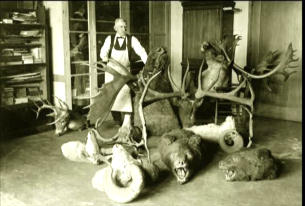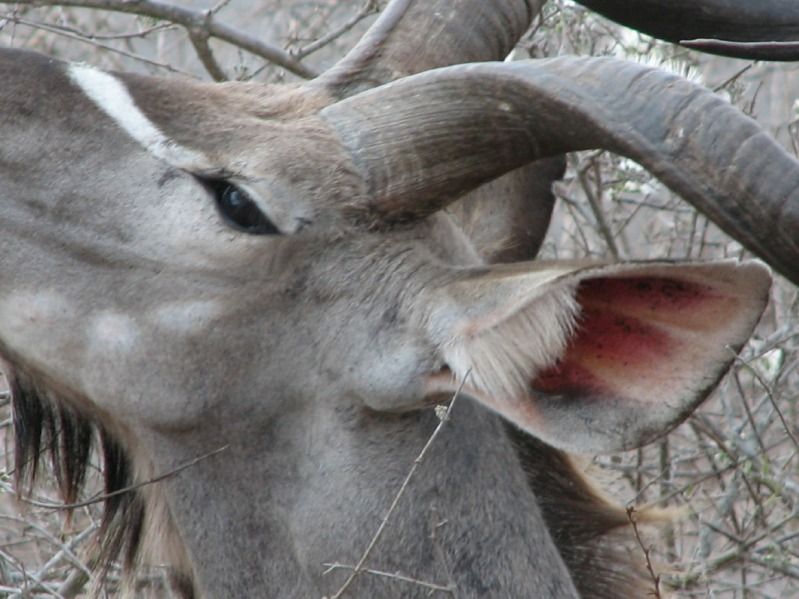

 The Accurate Reloading Forums
The Accurate Reloading Forums  THE ACCURATE RELOADING.COM FORUMS
THE ACCURATE RELOADING.COM FORUMS  Hunting
Hunting  Taxidermy
Taxidermy  Oil for horns
Oil for hornsGo  | New  | Find  | Notify  | Tools  | Reply  |  |
| One of Us |
I've got a lechwe skull mount and the horns never were oiled, or whatever is done to them. They look pretty dry. Any suggestions? Oh yeah, I'm in Las vegas. Average humidity is 6-12%. We think it's wet when humidity is 30%. | ||
|
| One of Us |
| |||
|
| one of us |
I like Scott's Liquid Gold. "There are worse memorials to a life well-lived than a pair of elephant tusks." Robert Ruark | |||
|
| One of Us |
You have to be careful using any kind of oil on horns as it will darken and blacken them. This is not a problem on horns that are very dark anyway but the horns of many species like kudu are not black. The above product is kind of like a paste wax that will create a nice luster. Many times a taxidermist must restore the natural color of the horn that has been damaged from over boiling, soaking up grease and drying out. Just oiling horns in this damaged condition without restoring the natural color first will just turn them dark black. | |||
|
| one of us |
Good to know, thanks Grafton. My kudu horns were blackened from over boilng. Obviously, my taxidermist didn't restore them. Can they be restored after being mounted? "There are worse memorials to a life well-lived than a pair of elephant tusks." Robert Ruark | |||
|
| One of Us |
What happens is that as the skull is cooked, the grease/fat from the skull soaks into the horns, turning them a dark black color. Sometimes they are boiled too long or over too high, direct heat which does not help and often leads to cracks and flaky horns. When people recommend "oiling" horns, remember that you are pretty much doing the same thing that the grease in the boiling pot was doing, causing the original problem, darkening the color. To answer your question, yes, they can be helped, however it would be a little more difficult if the horns are glued down to the horn cores. If they slip off, it would make it easier to get the job done. There is no way to get them to look exactly as they did on the live animal but you can get a much more natural look than the standard black. Here is a photo of a young bull feeding in Kruger. Check out the color of the horns:  Here is photo of a fresh killed kudu in Namibia:  You can clearly see why black horns is incorrect. Some people do not seem to care, to me it is kind of a big deal to try and get this right Some of this stuff is tricks of the trade but I do not mind sharing. It is not rocket science and there are a lot of techniques that will give good results. Most of what I have learned has been through trial and error. I always start with a good soap and hot water scrub and a wire brush to degrease the horns and a wipe down with acetone if they have been painted (yes even some dip and pack places paint horns!). Some times a little sanding is called for to reveal natural colors, cracks are filled as needed and the natural color tones are restored with an airbrush and various color washes. Believe it or not one of the best ways to quick fix that black is to mix up a wash of dirt and water. paint the dirty mixture on the horns and let it dry (we have the perfect red colored dirt for this where I live in VA). If it is too much, wash it off, if it needs more, repeat. There is a bit of an art to this but it will impart a natural dusty look to the horn. Once you get the look you want you can seal the horn with a matte finish or use a little paste wax or horn conditioner cream to add luster, especially to the tips. I have always described the natural look of kudu horns as "walnut meats" as this describes the luster and variation of color tones seen on live kudu, and it is the look I try to restore. Some species require more work than others and each one has its own issues, gemsbok rarely need work as they are pretty much black/dark brown, impala horn bases often bleach out etc... Heck, it may be a fun project to try at home, if you screw it up, just start over or reach for the black spray paint and get it back to how it was before you started | |||
|
| one of us |
Great information, thanks for all the effort. "There are worse memorials to a life well-lived than a pair of elephant tusks." Robert Ruark | |||
|
| One of Us |
Anytime SBT. Poprivit, if you do a Google image search for lechwe you will see that the horns have a bit of a dusty look too. They would benefit from the dirt/water wash treatment or if you like the color they are, just apply some of the horn conditioner cream or a bit of paste wax. I can understand how the exact, natural color of live lechwe horns becomes less important on a skull mount. | |||
|
| One of Us |
Thanks all. I'll follow through. | |||
|
| Powered by Social Strata |
| Please Wait. Your request is being processed... |
|

Visit our on-line store for AR Memorabilia

